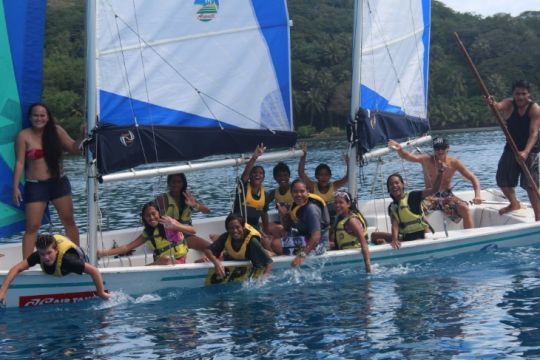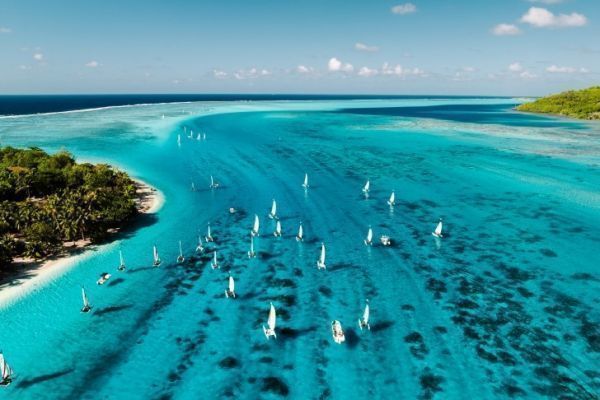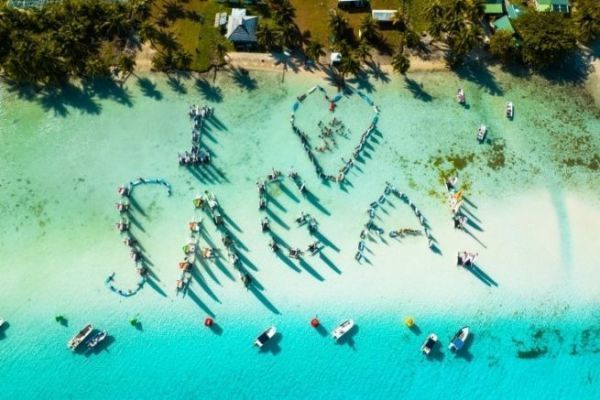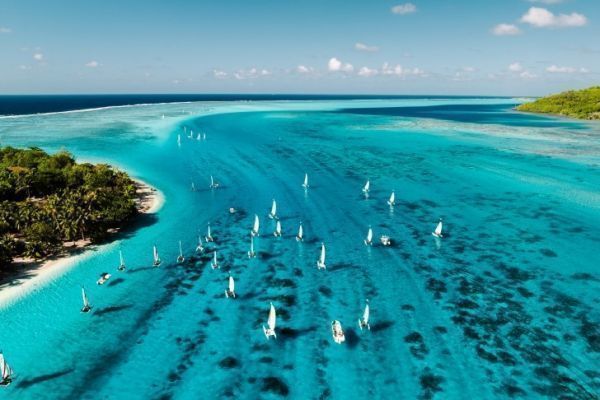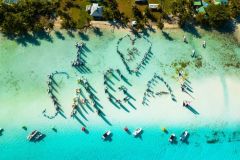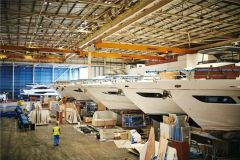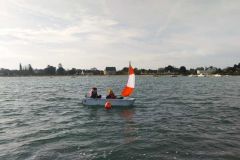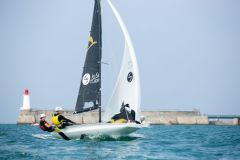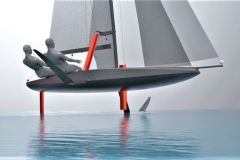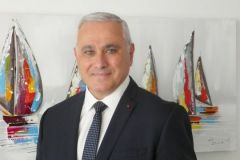In 1993, Henri Cornette de Saint-Cyr, nicknamed Doudou, let himself be carried away by a particular feeling in Tahiti that spurred him on to adventure. The idea of Saga was born, welcoming hundreds of young Polynesians to the Society Islands for stays dedicated to sailing and nautical activities. From its humble beginnings at the Arue Sailing School, this program has become a veritable catalyst for learning, development and discovery for children from all over Polynesia and beyond. Through Doudou's testimony, we look back at an adventure that has transformed the lives of thousands of children and shaped their connection with the sea and Polynesian cultural heritage.
Can you tell us how the idea for the Saga came about in 1993, and how it has evolved since then?
An adventure always starts with a "fiu", as we say in Tahiti. So, when it comes, you have to move on quickly, look inside yourself for your childhood dreams and draw on your imagination to find that little something that grips the heart and thrills. Then, perhaps, the adventure can begin. This is undoubtedly how we become intelligent, or at least creative, and how the taste for things and life quickly returns.
A little bit of history goes back to the 90s, when the little routine of the Arue Sailing School was well underway. Like any system, the program was planned, and the summer vacations were filled with courses, but a fun and original project that we liked best took us to the island of Moorea with young children aged 10 to 12, the "unselected" from the season's national and international trips.
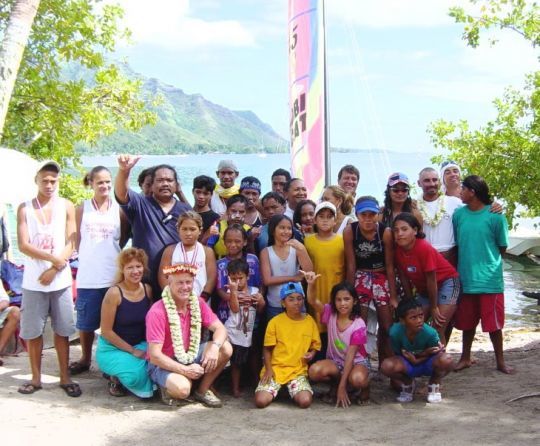
The program was simple: tour the island in stages over a week in an Optimist. With weapons, luggage, children and parents, we'd spend a week on the ferry. Each day brought its own gags, and we had a lot of fun. In the evenings, we'd tell each other stories and, of course, amplify events. From the safety boat's engine failure, to the dead batteries on the liaison car, to the trailer wheel that overtook us on the road, there was no shortage of opportunities for laughter. The children also had a lot of fun; each stage ended on a hotel beach and, to earn their snack, there was the inevitable water ballet, a kind of copy of the water ballets, very technical, requiring a lot of cohesion and mastery. And there were the tourist Optimist rides to round it all off. A small 35-kilo walnut hull, barely capable of supporting a 50-kilo child, had to absorb a large American woman: inevitably, the event did not go unnoticed. Neither did the desalination, to the delight of the entire beach.
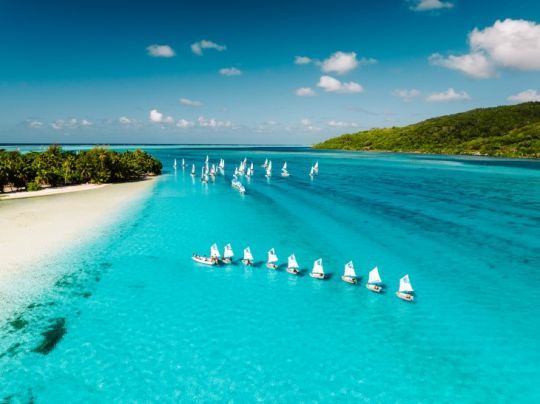
Time passed, and in 1993, the escape virus reappeared, with even greater virulence. No doubt a rare form of allergy to everyday life, manifesting itself in a need for fresh air that can only be found in the open sea... but also in the Tuamotus. So, the idea of exporting oneself to the clear waters of Rangiroa could be imagined in concrete terms. As chance would have it (for those who believe in it), I was guided to my friend Grégoire, a schoolteacher in Avatoru, Rangiroa, who was enthusiastic about the project and quickly came up with solutions for accommodating the children and the small team of entertainers. The Dumont d'Urville, a French Navy vessel, was able to transport the equipment. All that remained was to find the financing...
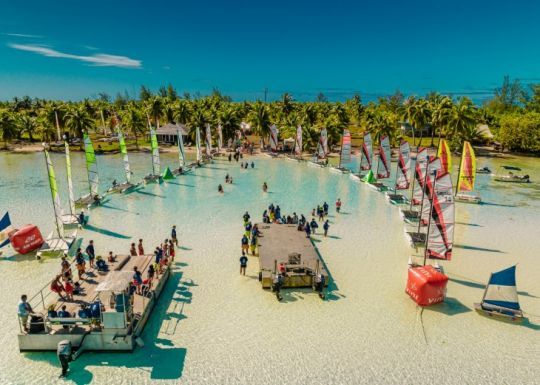
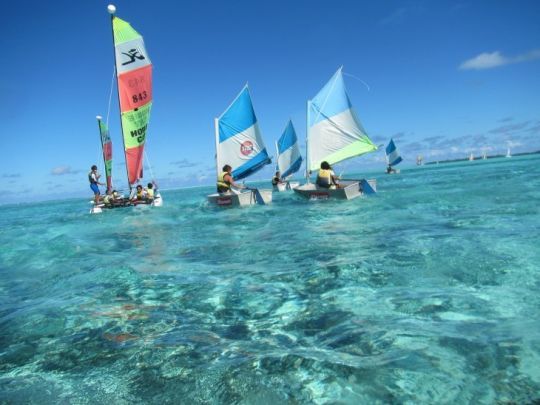
31 years later, the Saga has traveled an extraordinary path through the islands of French Polynesia. Beginning in Rangiroa in 1993, it has explored Tahaa, Bora Bora, Tikehau, Raiatea, Moorea, Huahine, Makemo, Maupiti, and various other sites all the way to idyllic Tahiti. Despite obstacles such as those posed by the pandemic in 2020 and 2021, the Saga continued to thrive. In all, 20,994 children from all the Polynesian archipelagos (Îles du Vent, Îles Sous-le-Vent, Marquises, Gambiers, Tuamotus, Australes) as well as children from Easter Island, Hawaii, Samoa and even two Tibetan children who, of course, had never seen the sea, took part in this adventure. What's more, 1,240 host families on all the islands visited by the Saga since the 31st edition have helped to make this project possible.
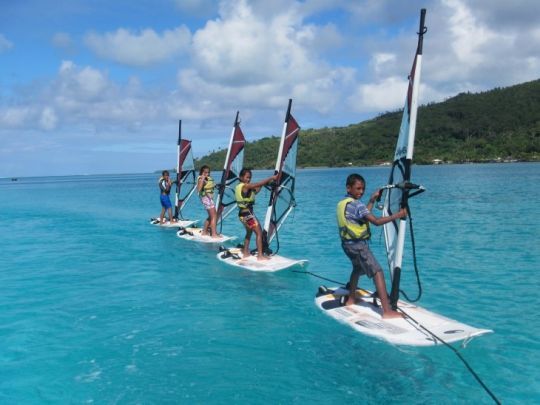

How is the Arue Sailing School involved with young people?
Welcoming and transmitting our know-how to as many people as possible, without distinction, and communicating our passion, is the very essence of what we do. We strive to innovate in our activities and practices, creating new opportunities and responding to demand while respecting our values. We firmly believe in the importance of participating in the development of links and the fulfillment of future generations. That's how we can make a real difference and inspire others to do the same.
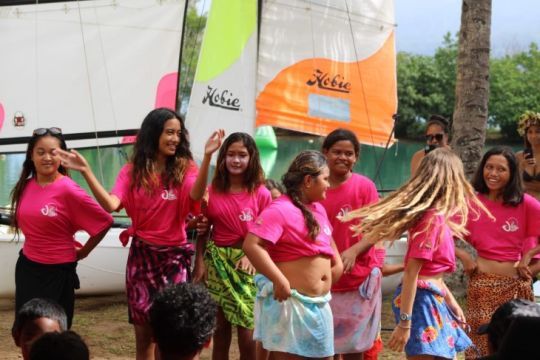
What values do you hope to instill in children through the Saga's nautical activities and other programs?
First and foremost, commitment and passion are at the heart of our approach. We want every child to feel this enthusiasm and devotion in everything they do. Secondly, crew spirit is fundamental. Learning to work together and support each other is crucial, not only in sailing, but in life in general.
Respect for each other's worlds is also a key value. We stress the importance of understanding and appreciating differences, and respecting each other's experiences and perspectives. The pleasure of sharing is another value we cherish. We firmly believe that sharing knowledge and experience enriches both mentor and student.
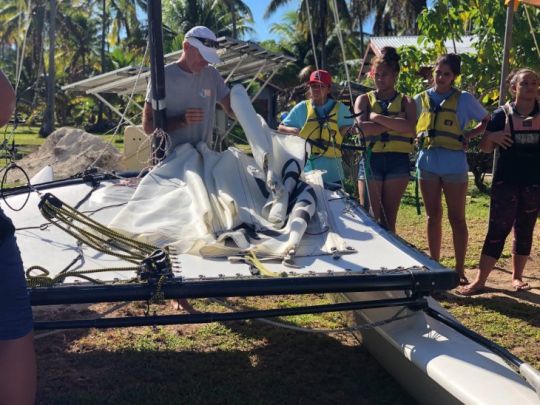
At the same time, surpassing oneself is a value we strongly encourage. We encourage children to push themselves beyond their limits, to overcome challenges and discover what they are truly capable of. Finally, the right to make mistakes is crucial. We want children to understand that making mistakes is part of the learning process, and that it's okay to make mistakes as long as you learn from them. That's how we help them grow up confident and resilient.
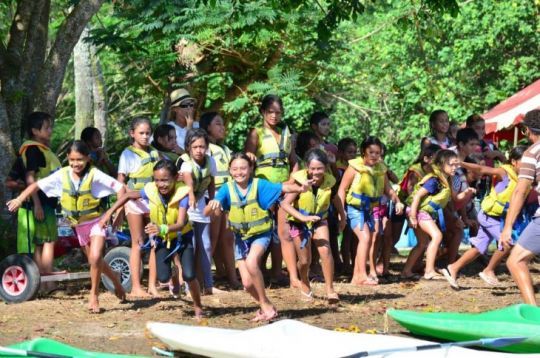
Can you share an example of the logistical challenges you faced just before the start of one of the Saga editions?
What a journey! It's always an obstacle course, but the obstacle course holds! Here we are, almost there, D-1, just before the children arrive. There's still an impressive list of a thousand little details (sometimes even big ones) to sort out, a bit like before a big ocean race where you're packing boxes and boxes with the fear of forgetting some, while the first yachts are already leaving the dock. So here we are:
-
Transporting equipment is OK! The Degage family is lending its support and logistics. The transport of equipment and children will be free of charge on the Aemiti boats, a big relief, phew! Thank you so much!
-
Air Tahiti, like every year, will be on hand to transport all the little darlings from the far-flung islands, offering us "saga" fares. As for the telephone, phew, we've got one back, but the computers refuse to be networked. In the meantime, it's the USB sticks that are working.
-
The Internet will have to wait until next week: it's my own fault, I thought I was using the existing network and didn't apply.
-
The beach: phew! The team is almost complete, and with just a few hours to go before the children arrive, we can finally remove the dead trees and coconut trunks that have fallen victim to the vagaries of the weather, and it was a disaster when we had to move the newly installed boat parking area to accommodate the trucks and other boxes!
-
The padlocks! We were going to forget them for the toilets (it's important)!
-
The box of plastic bags for the garbage cans, of course, hidden among the 250 others thrown in a bit of a heap on arrival due to lack of time, as we had to catch the return shuttle within half an hour!
-
Partner stickers: Vini, OPT, Air Tahiti, Socredo, Fenua Ma, CMA CGM, Aremiti and all the others we're waiting for.
-
Our Swiss friend! To be picked up in a hurry on the Ferry: he missed the morning boat. As punishment, he had to drive the old Trafic, normally reserved for those with 10 sagas under their belts... but the test was satisfactory, except that he sweated a lot.
In the meantime, the cell phone must have rung 15 times in half an hour! That's when we realize just how small we really are, and all the years of saga experience pale into insignificance... Today's world is decidedly cruel!
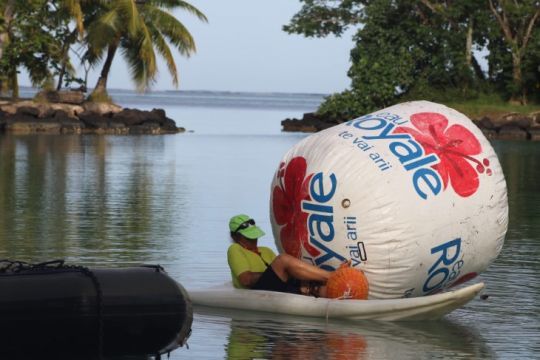
How would you describe the atmosphere and the first moments with the children, and what are the key activities that mark the beginning of this adventure for them?
D-Day is here! The children are there, almost in their entirety (there are always a few latecomers), and the whole team of animators finally gets to meet our little darlings. We're also a little intimidated and moved by all the curious, attentive and enthusiastic looks on the children's faces. Now it's time to pull out all the stops! Anietha reveals herself to everyone's surprise: in fact, she had prepared well for the occasion by starting a Polynesian welcome song that all the children sing along to. Then it was time for instructions, and for everyone to be divided into groups so as to get into the water as quickly as possible, without forgetting... the boats. The weather is magnificent! We couldn't have wished for better!
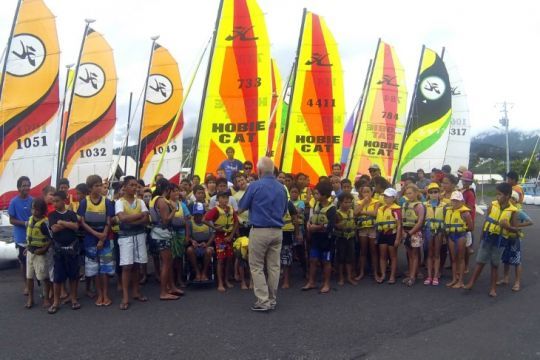
The activities quickly follow on from one another: kayaking quickly generates queues, swimming makes the water in the lagoon rise, the drawing workshop is already wearing out the pencils, and building rafts, hedges and garbage cans with string and wood to tie knots... sailors if possible, causes blisters. In short, a whole program to fill the days. Evening comes quickly, and the return trip is managed by Ahutua. The children can't wait to meet up with their host families, to talk about their adventures and also to crawl into bed: it's been a long day. On Sunday, we invite our host families over for a maa Tahiti (Tahitian meal), dancing and sea rides. A whole program in which everyone participates with great enthusiasm and sharing.
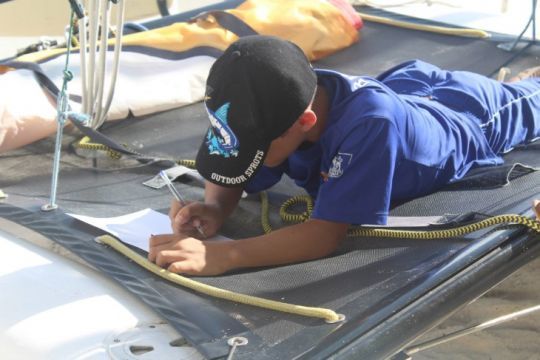
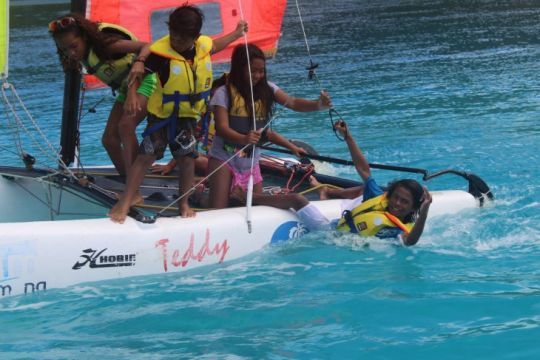
Finally, the last day: morning regatta in light airs, the wind was slow to pick up, and then finally, 10 knots of wind were enough to complete this first experience. Running, jumping, swimming, searching, creating, helping each other - it's intense, funny and the perfect way to round off this first week before the departure that we all know is always difficult.


It only took a few days for them to become attached to and appreciate each other, and for us all to bond. The children delighted us in their own way, with their mischievous smiles and knowing glances. We're all aware that we've experienced some very powerful moments, and hope that we've brought a little light into the lives of all these children, so that they can use it in the darker days.
